About the relay we put in a word
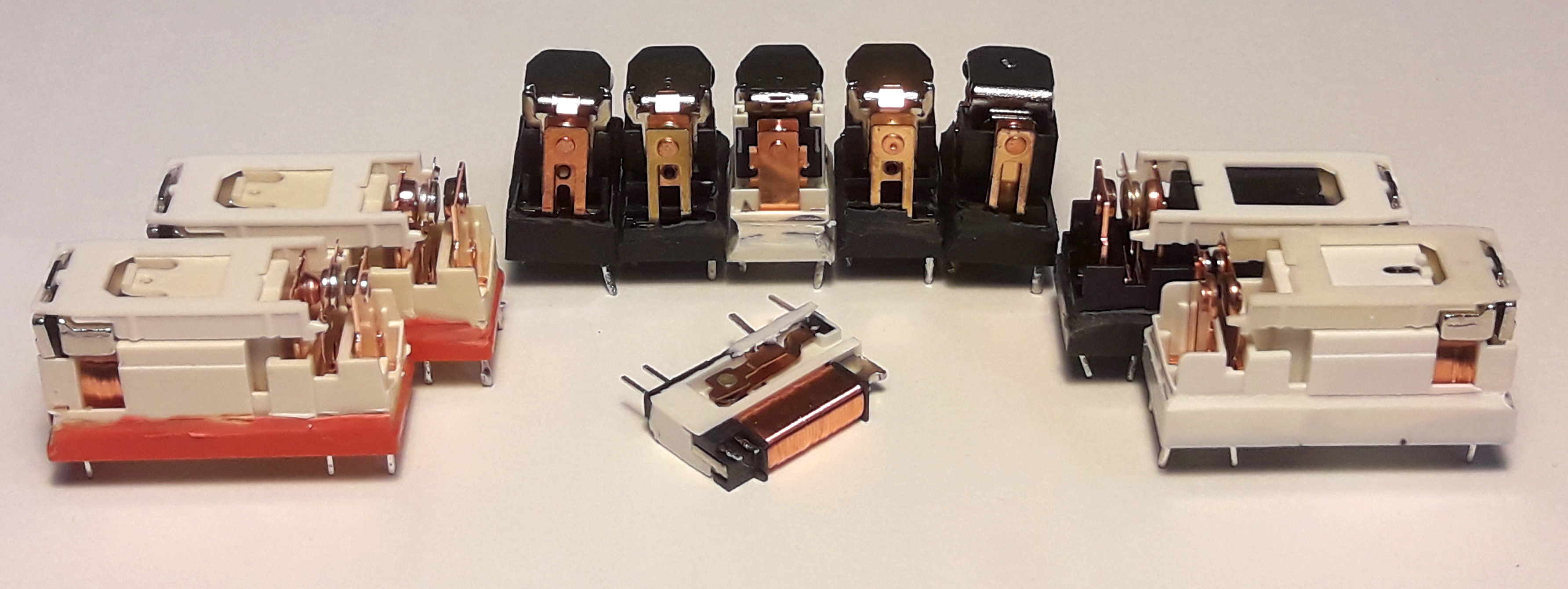
- He was killed by the starting current!
The most frequently used component for switching circuits is the good old electromagnetic relay. However, choosing the right relay is often not an easy task. Well, let's try to cover this issue.
And what is the problem? Well, we calculated the current in the load and took the relay with the appropriate rating. But such a calculation may be mistaken: the whole problem lies in the starting currents.
Short-circuit starting currents
Let us arm ourselves with an oscilloscope, a Hantek CC-65 current clamp for it, a voltage transformer HWPT07 for galvanic isolation of the oscilloscope from the circuit being measured (it is not necessary, but convenient to look at where the voltage sine wave is switched) loads.
')
For convenience, the measured currents are normalized to the conditional “nominal” current of the device, which is determined by the formula as the power indicated on the device divided by the mains voltage (230V) and multiplied by the root of two (current peak value) -
Incandescent lamps
"Purely resistive load, what starting currents?" - Asks the reader.
And here and there, while the spiral of the lamp is cold, it has much less resistance. A 95 W incandescent lamp has a resistance of 40 Ohms, which gives an estimated starting current up to 320 V / 40 Ohm = 8 A, that is, 13 times more than the rated current!
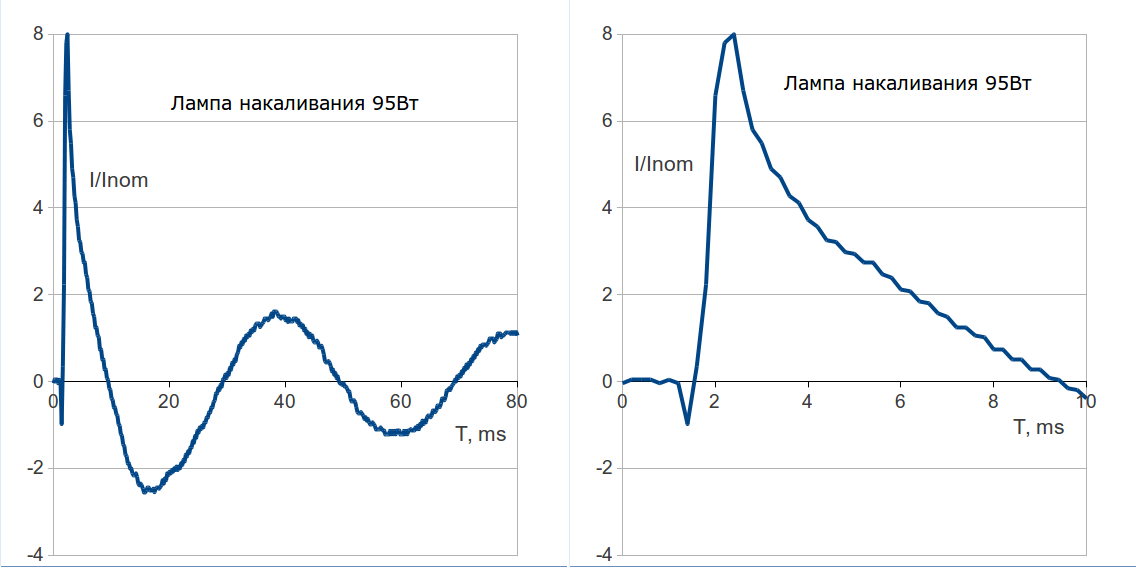
We see that the starting current exceeds the nominal value by 8 times, the heating time of the helix is less than one half-period, and the peak duration is approximately 2 ms.
Warm floor. Kettle, heaters email. boilers
The temperature coefficient of nichrome spirals in heating elements is very small, and the starting current is close to the rated current.
The exception is self-regulating cables for underfloor heating. They have a semiconductor heating element, its starting current can be more than 2 times.
LED and compact fluorescent lamps
“A-ha-ha, what are the currents of a 10-watt light bulb!”
Such lamps of low power contain a rectifier bridge with a capacitor. That is, it is a purely capacitive load, and the starting current must be very large. As a rule, to reduce it, manufacturers put a resistor in front of the bridge.
Let's look at the graphics:
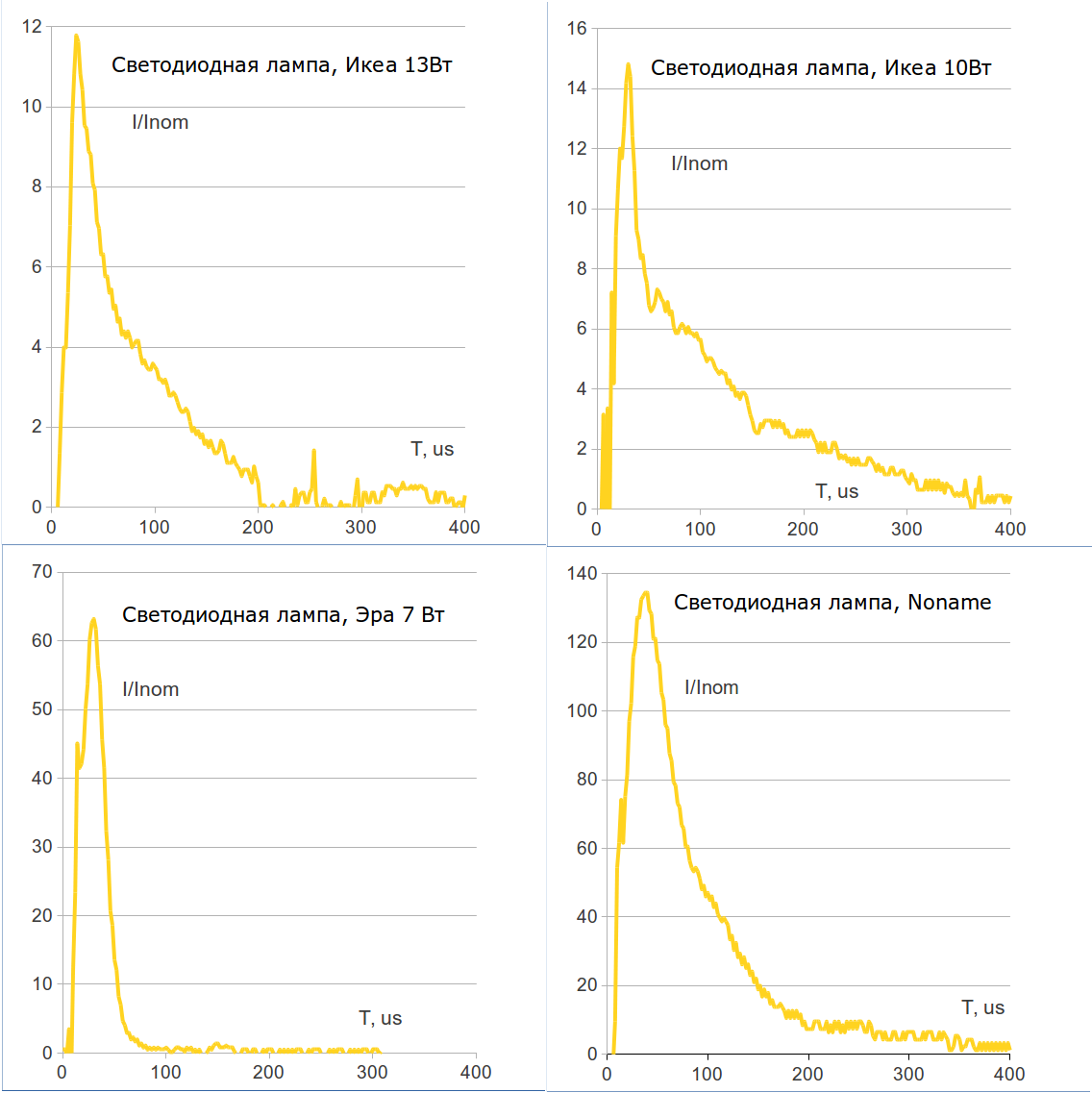

It is seen that everything is quite good with Ikeev lamps. But with other LED lamps, the starting current exceeds the rated value by 150 - 200 times, and the duration of the peaks is ~ 100 μs.
Electric motors
“The inductive load has zero starting current! This is the inductance! "
Well, at the moment of contact closure, the current really grows smoothly, but then:
1. if the moment of short circuit has fallen into zero voltage, then the current surge is twofold (for a purely inductive load);
2. until the engine reaches the rated speed, the current exceeds the rated current several times; the more powerful the engine, the greater the excess.
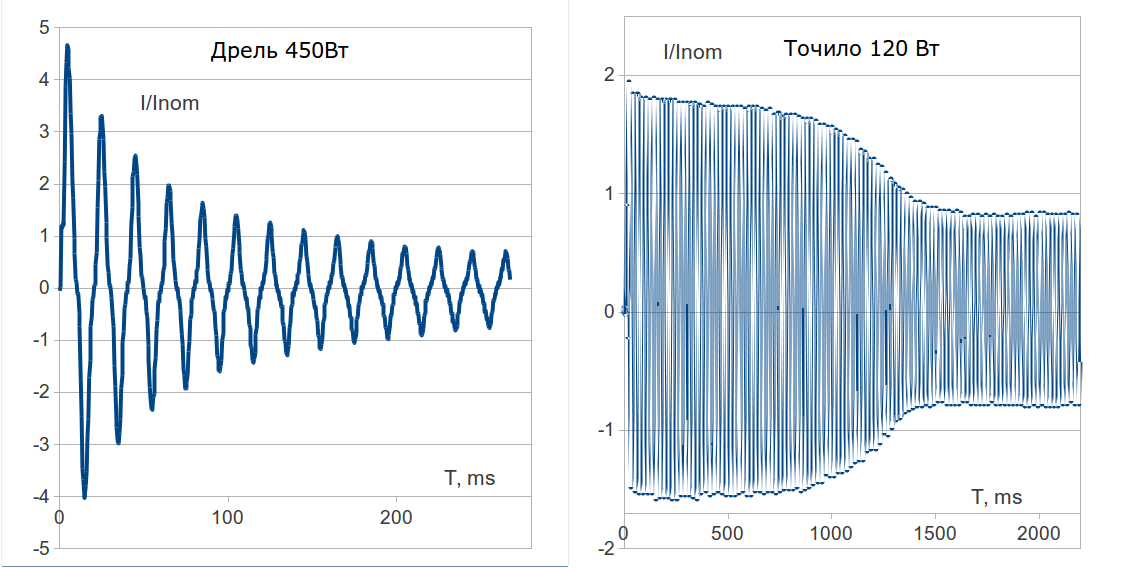
Power supplies
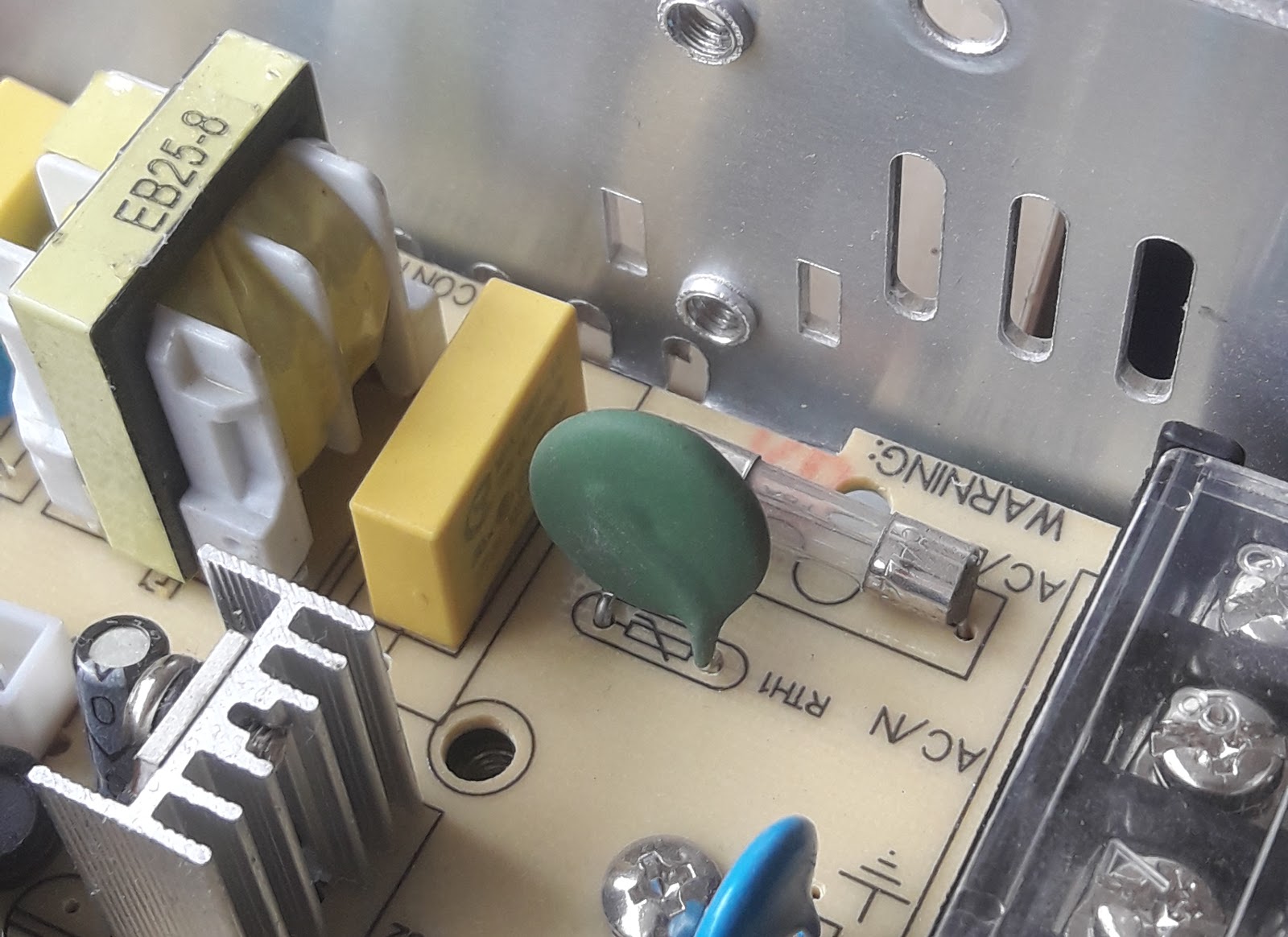
Similar to the LED lamps at the input of these power supplies is a diode bridge and large capacitors. To reduce the starting currents manufacturers put NTC-thermistors, green (sometimes black) and round:
In a cold state, they have a noticeable resistance, which limits the starting current. When the power supply operates, the thermistor heats up and its resistance decreases (20–30 times), almost without interfering with the flow of current. But after turning off the power supply for a while (up to 1 minute) the thermistor remains hot and cannot limit the starting current. Therefore, it is highly desirable to wait 10 to 30 seconds after turning off the power supply before turning it on again. Below are graphics with re-powering in ~ 15 s (with fast switching peaks even more):
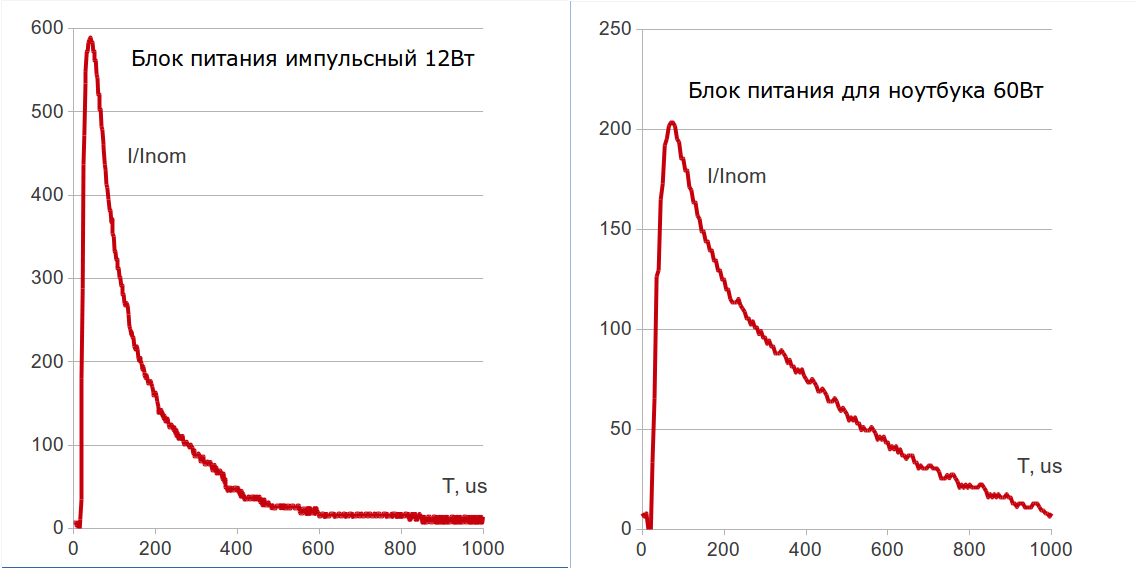
How to live with this knowledge?
The documentation for the relay can indicate several currents:
the nominal current (Contact rating current) and the maximum switching current (Max. switching current) or the starting current (Inrush current), etc. And the “normal” relays often do not indicate the starting current. About unusual write below. That is, if the relay says “10A”, then it means that, by default, it also has an inrush current when switching should not exceed 10A. Perhaps it can be multiplied by 2, but this is not accurate.
If the maximum starting current is 10-20A, and the LED light has a starting current 100 times the nominal, then it is very sad: it turns out that only 20-40 W of light bulbs can be switched.
So with conventional relays, you either need to limit yourself greatly in choosing the load and lower the power, or be prepared for the contacts to be welded often and the relay will have to be changed. For loads with large starting currents, it is better to use special relays.
And now a minute of advertising about the wonderful, the best in the world relay modules of our production with control by Modbus RTU of the WB-MR3LV / I and WB-MR3LV / S series and their versions with HV inputs, as well as the WB-MRPS6 modules. In them we put the relay HF115F-I and HF115F-S from the manufacturer Hongfa (the largest in China and the fourth in the world manufacturer of relays).
The difference between the HF115F-I relay is special contacts from AgSnO2, and the HF115F-S also has a special design of two pairs of contacts when the first pair (tungsten contacts, high pulse current) closes a little earlier than the second (low contact resistance, high constant current).
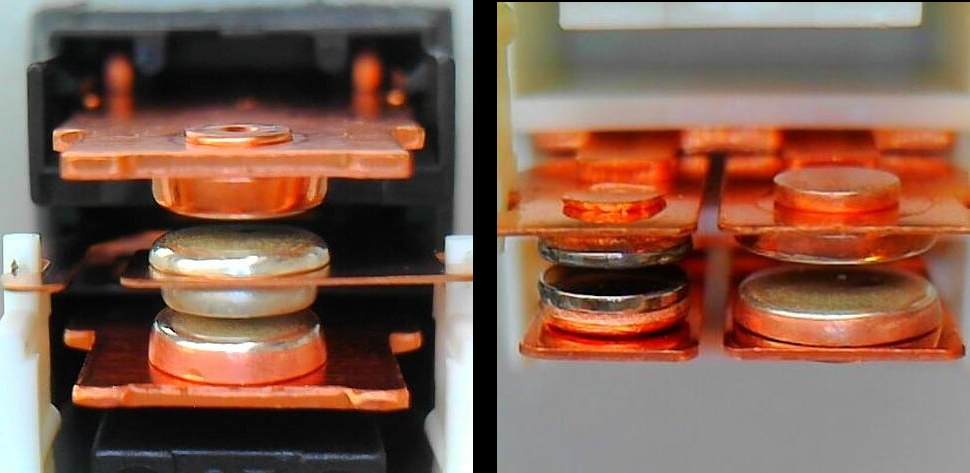
The photo shows the contacts of the relay HF115F-I (left) and HF115F-S (right).
Starting current HF115F-I - 120A / 20ms, which allows switching incandescent lamps with a total capacity of up to 2 kW.
And HF115F-S - 165A / 20ms and 492A / 1.5ms, 800A / 25mks, that is, up to 3 kW for incandescent lamps and up to ~ 600 W for LED lamps.
Photos of these wonderful relay modules:
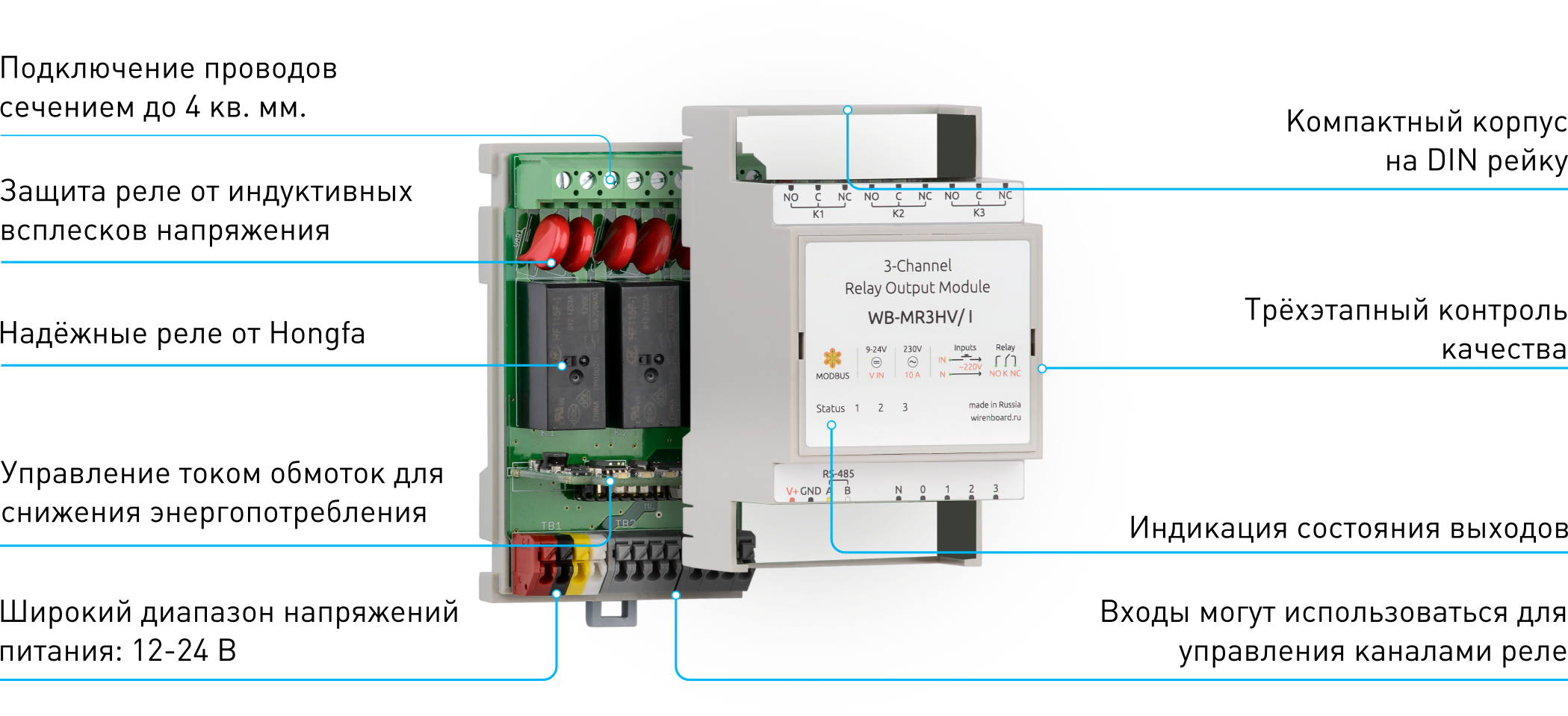
And there is also a relay module WB-MRWL3 with a relay HF161F-W : its feature is a large rated current, which allows you to work with the 16A circuit breaker and use it to switch socket groups.
Summary table:

Source: https://habr.com/ru/post/422197/
All Articles